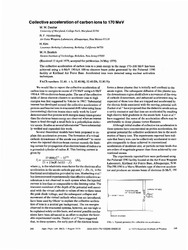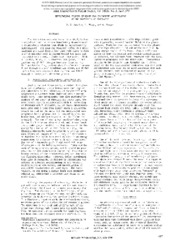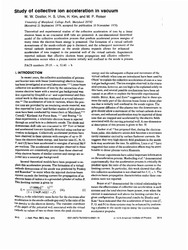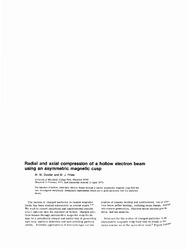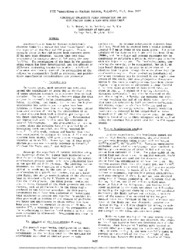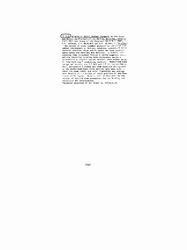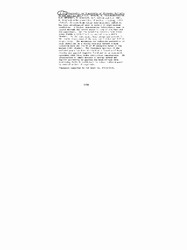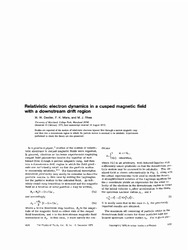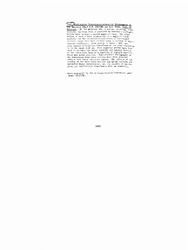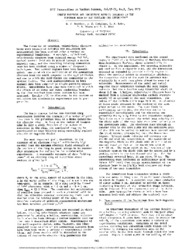Search
Now showing items 1-10 of 22
Collective acceleration of carbon ions to 170 MeV
(American Institute of Physics, 1979-08-01)
The collective acceleration of carbon ions to a peak energy in the range 170-200 MeV has been
achieved using a 6-MeV 190-kA lOO-ns electron beam pulse generated by the Pulserad 1590
facility at Kirtland Air Force Base. ...
Experimental studies of heavy ion collection acceleration at the University of Maryland
(IEEE, 1979-06)
The collective acceleration of ions (H,C,N) from
a well-localized ion source immediately downstream of
a relativistic electron beam diode is experimentally
investigated, The ions are produced either in a wellconfined
gas ...
Study of collective ion acceleration in vacuum
(American Institute of Physics, 1979-05)
Theoretical and experimental studies of the collective acceleration of ions by a linear
electron beam in an evacuated drift tube are presented. A one-dimensional theoretical
model of the collective acceleration process ...
Radial and axial compression of a hollow electron beam using an asymmetric magnetic cusp
(American Institute of Physics, 1977-09)
The injection of hollow. relativistic electron beams through a narrow asymmetric magnetic cusp field has
been investigated analytically. Preliminary experimental results are in good agreement with the analytical
theory.
Controlled collection field propagation for ion acceleration using a slow wave structure
(IEEE, 1977-06)
Acceleration of ions by intense relativistic
electron beams in a vacuum has been investigated using
the injector of the Maryland ERA project. Proton
energies above 16 MeV and proton beam currents above
10 kA have been ...
Relativistic electron dynamics in a cusped magnetic field with a downstream drift region
(American Institute of Physics, 1975-12)
Studies are reported of the motion of relativistic electrons injected first through a narrow magnetic cusp
and then into a downstream region in which the particle motion is assumed to be adiabatic. Experiments
performed ...
Single particle and collective effects observed in the electron beam of the Maryland era experiment
(IEEE, 1975-06)
The formation of rotating, relativistic electron
beams with properties suitable for collective ion
acceleration has been studied under a variety of
experimental conditions. A straight, cylindrical,
relativistic electron ...

